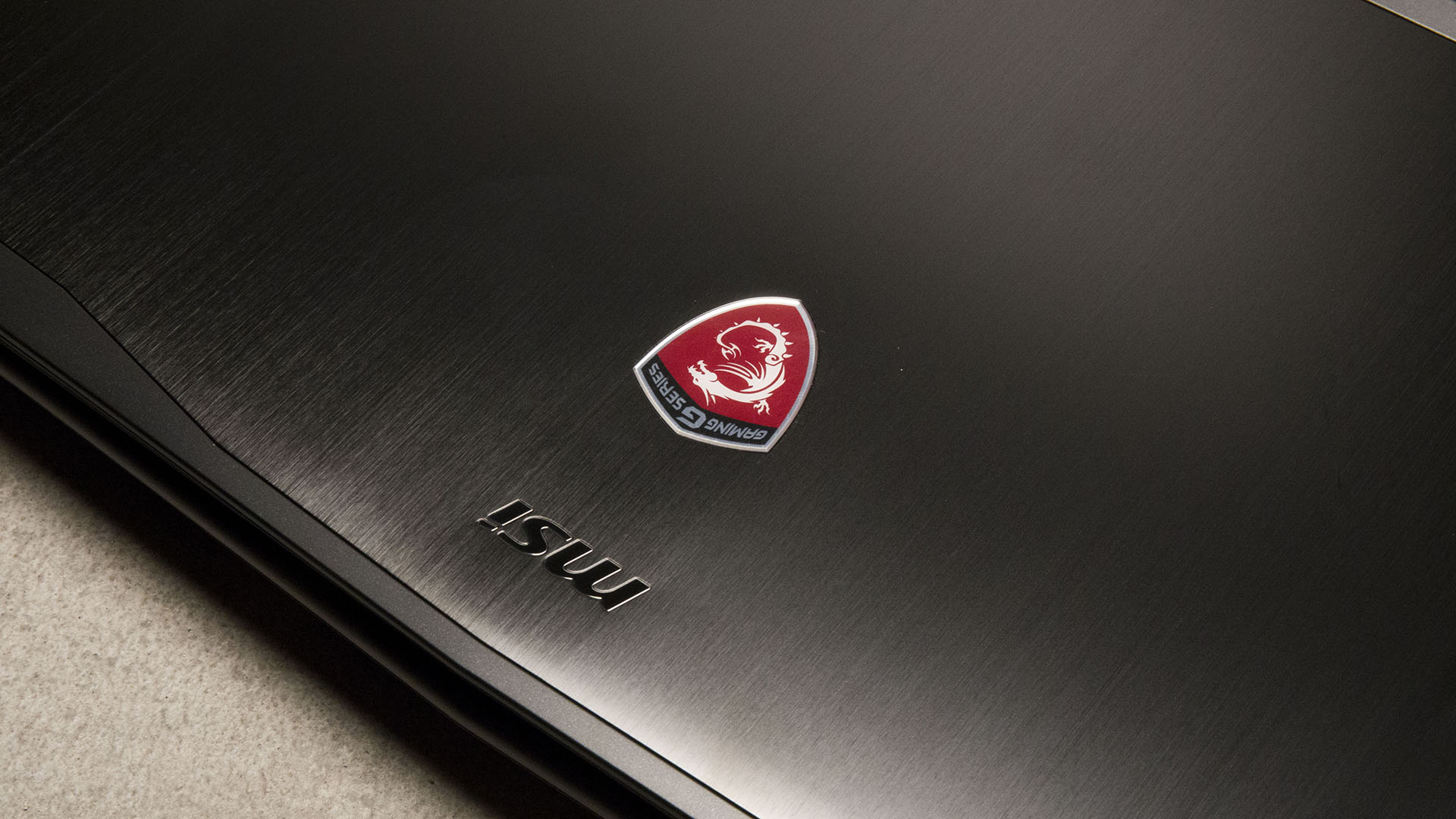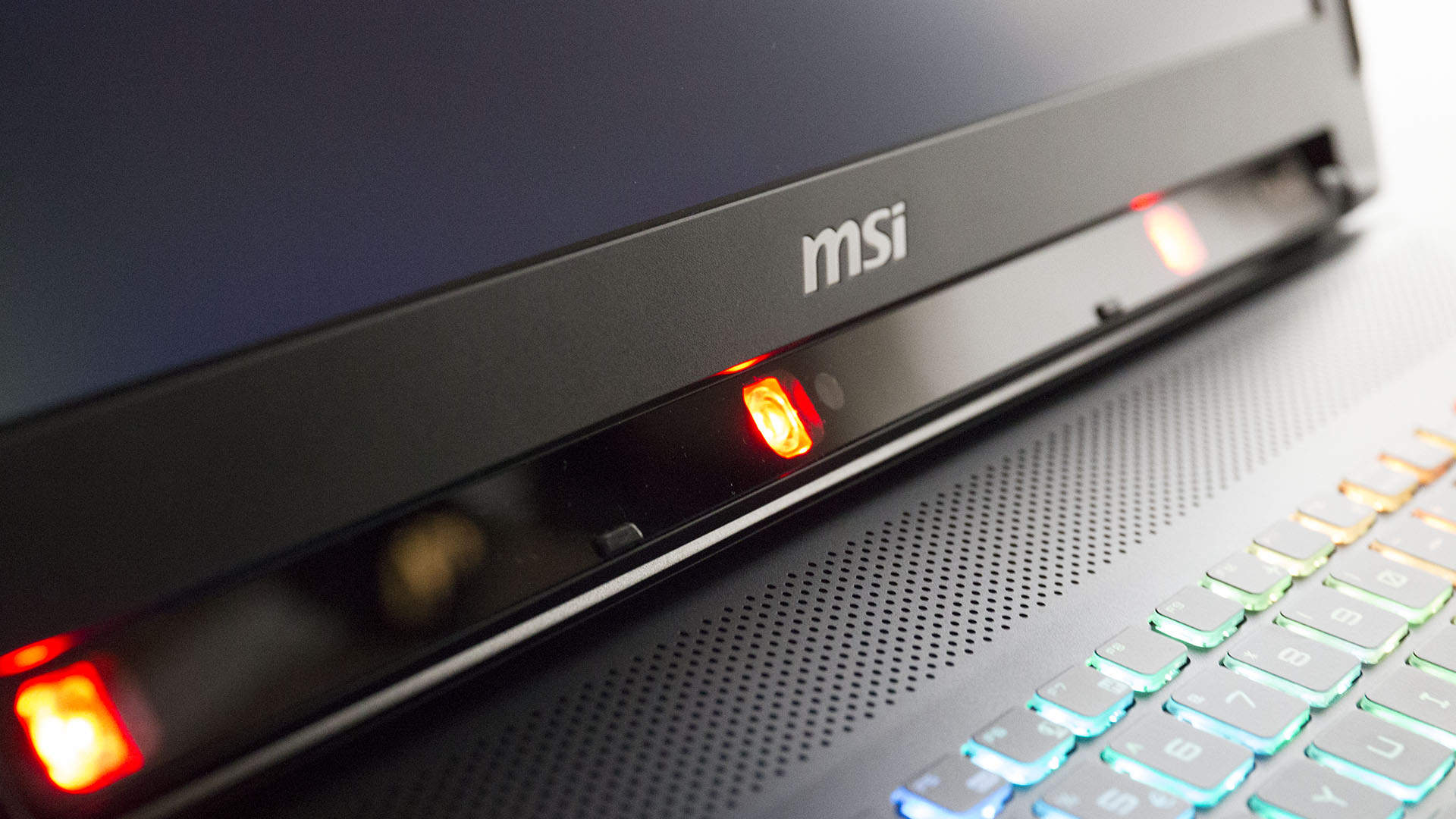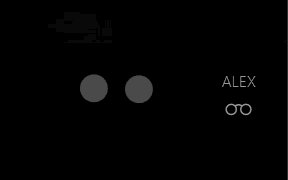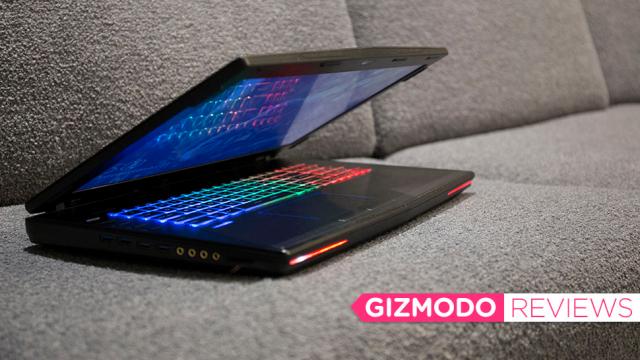Eye tracking feels like the future. Your eyes rove across the screen seeking out more asteroids to blast. The reticule traces the same path in fits and spurts: flickering with every blink. Asteroids explode and the score floats through your peripheral vision. It’s a simple game you play after calibrating the system, but this is a tiny leap towards that world we here at Gizmodo wax wistfully about. Too bad it’s stuck in a $4200 laptop.
MSI has a habit of making very good and very beefy laptops. While the rest of the laptop world runs gleefully down the path forged by the Macbook Air, MSI has waded into the weeds and produced laptops that only barely count as portable. They’re gorgeous devices with all the flashy lights and speedy guts you’d want out of a gaming computer, but in order to squeeze in that 43cm display they also have to be damned hefty. And warm too. I used this MSI GT72s G Tobii in lieu of a blanket during New York’s cold snap.

Things I wish my MacBook Pro could do: this.
In appearance, the GT72s G Tobii isn’t too different from the standard MSI GT72s. Excellent gaming goodies include: a solid keyboard with customisable lights (software courtesy of SteelSeries), one of the best mobile video cards money can buy (the Nvidia 980m), and a GSync-enabled display. GSync works technological magic behind the scenes, capping the frame rate in games to match the refresh rate of the display and ensuring a smooth viewing experience.
For most 1080p IPS displays, like the one in the GT72s G Tobii, that means 75 frames per second to match a 75Hz refresh rate. Higher frame rates will still be capped off at 75 frames per second. But you’ll need to keep games humming along at high settings or lower. I tried out Firewatch, a new game where you wander through Yellowstone to solve a MYSTERY, on the “Ultra” settings, and found my frame rate sitting steadily in the 40s with sporadic jumps up to 55 fps. When I dropped down to “High” the laptop managed a steady 75 fps no sweat.

Ultra was a no go in Dayz, a post-apocalyptic zombie number, as well, but that wasn’t a problem for me, because Dayz had something else going for it. It’s one of the few available games that works with Tobii’s Infinite Screen Extension. Infinite Screen Extension makes gaming as immersive as possible, short of wearing a VR headset. Every twitch of your eyes moves the camera on screen and re-centres it. When I heard zombies lurking in the brush I could just glance in the sound’s direction and the camera would reposition — focusing on the point as naturally as your eyes should.
It’s so natural, you forget you only have 43cm of screen to work with. That led to my own bizarre desire to be playing the zombie game in VR. I’m normally reluctant to strap on a headset: They require a lot of oomph to churn out games at a high enough frame rate, they can feel claustrophobic, and looking around a VR game world is never quite natural or unnatural enough. You find yourself sitting in an Uncanny Valley, and after gaming for an hour nausea sets in.
There was no nausea with Infinite Screen Extension. It just worked, and when my eyes fatigued I could simply look away from the screen instead of prying half a pound of plastic off my face. But Tobii’s eye tracking sensor is bulky. It’s a bar along the hinge of the computer and it glares at you with three bright red lights whenever the sensor is enabled. It possesses a chunky DIY sensibility despite being some seriously high grade tech.

The eye tracker sees all.
Eye tracking’s also not yet especially useful outside of gaming. The screen doesn’t recenter itself when you’re glancing at a file in Windows Explorer, and apps don’t open simply by peering at them. Interaction with your computer through eye tracking feels stunted and the few things you can do often feel like parlor tricks.
The laptop can monitor when you’re watching the screen. The display dims when you look away to text on your phone or squeeze in a few more minutes of Fire Emblem on your 3DS. Then when you glance back at the screen it returns to whatever brightness setting you’d apply. It can also read your face and unlock the computer whenever you appear. Again, it’s a handy feature, but not especially life changing. And it prompted me to think about how easily a murderer could access my files. Who needs Apple’s backdoor? Just hold my dismembered head up to the screen and wait.
The only really outstanding bit of Windows integration is so minor it feels ridiculous to highlight: the mouse/pointer can hop.
If it’s down in the righthand corner and my eyes are somewhere on the top left the pointer will simply appear — teleporting across the distance in an instant. It only shaves a second or two off any particular interaction with my computer. It’s unlikely to make or break any key computational moment. But it’s so natural that I definitely found myself missing it when it wasn’t there. Now the pointer on my Macbook Air, already cranked to the highest sensitivity and tracking speed, feels glacial.

Yet a teleporting pointer and immersive gameplay aren’t quite enough to justify the $4200 price. A model without the eye-tracking sensor goes for just $3000.
Support for eye tracking technology is developing quickly. Tom Clancy’s The Division is released on March 8 and will be one of the first mainstream games to be seriously integrated with eye tracking technology. You’ll be able to aim at bad guys, open boxes, and spy on terrorist without having to touch your keyboard or mouse.
It could be cool. So could better integration with Windows. Or a smaller sensor bar.
Right now eye tracking technology feels more like a demo on the trade show floor. There’s certainly not enough out there to warrant paying an extra $1000 for your laptop. But five years from now? Ten? That’s when things could get interesting. I can’t wait to control my entire computer with my eye meats.

